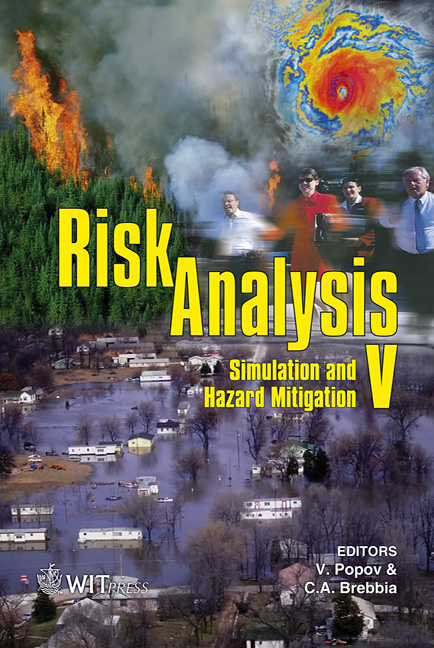A Stochastic Approach To Rainfall Forecasting In The Space-time Domain: The PRAISEST Model
Price
Free (open access)
Transaction
Volume
91
Pages
13
Published
2006
Size
656 kb
Paper DOI
10.2495/RISK060051
Copyright
WIT Press
Author(s)
B. Sirangelo & D. L. De Luca
Abstract
This paper introduces a new stochastic technique to forecast rainfall in the spacetime domain: the PRAISEST model (Prediction of Rainfall Amount Inside Storm Events: Space and Time). The model is the extension of the previously presented approach to at-site prediction. PRAISEST is based on the assumption that hourly rainfall in a generic point, denoted by H, can be predicted, with a certain probability, by means of the stochastic process that takes into account either a variable Z, representing antecedent precipitation at the same point, either a variable W, representing simultaneous rainfall at neighbour points. The mathematical background is given by a triple power transformation of the Al-Saadi and Young’s trivariate probability distribution, which allows to fit the first and second order sample statistics of H , Z and W and the sample correlations values HW r , HZ r and WZ r . As a study area, the Calabria region in Southern Italy was selected. The region was discretised by a 10 km x 10 km cell grid, according to the hourly raingauge network density in this area. Storm events belonging to the 1990–2004 period were analyzed to test the performances of the PRAISEST model. Keywords: hourly rainfall forecasting, space-time stochastic processes, trivariate probability distributions. 1 Introduction In the present work the forecast model of precipitation named PRAISEST (Prediction of Rainfall Amount Inside Storm Events: Space and Time) is described. To forecast rainfall heights named H, in a generic cell of space domain, the existing link among the random variables H, W and Z is used. The variable Z represents antecedent precipitation at the same point and the variable
Keywords
hourly rainfall forecasting, space-time stochastic processes, trivariate probability distributions.





